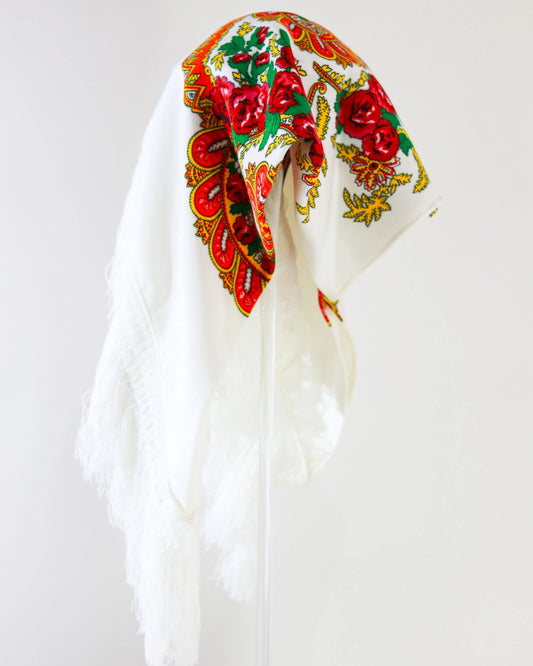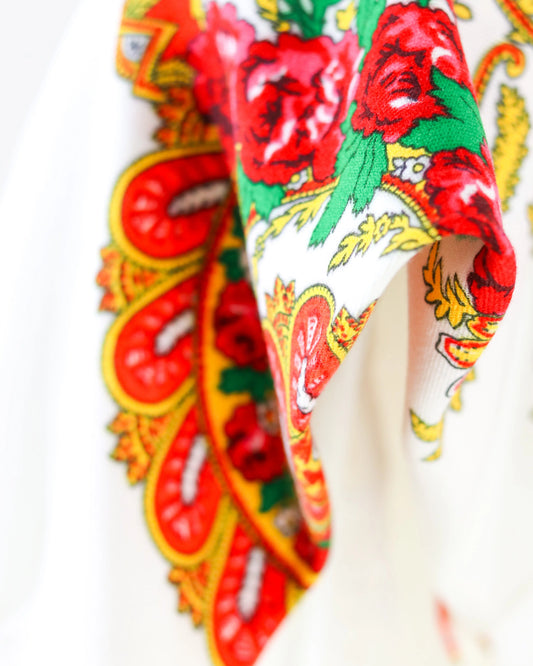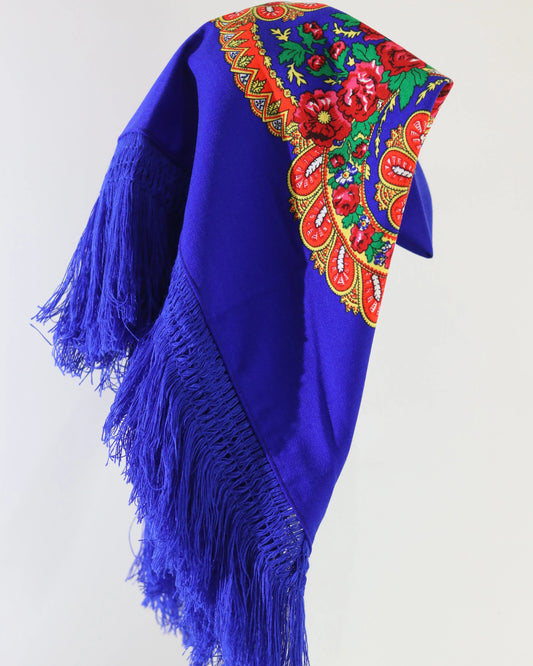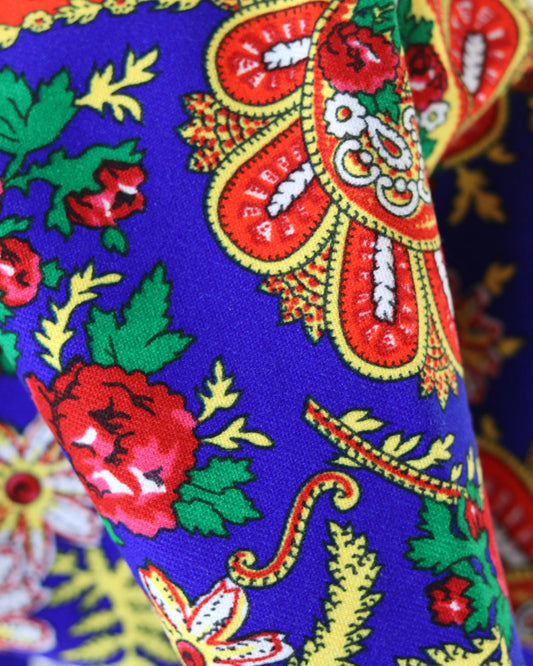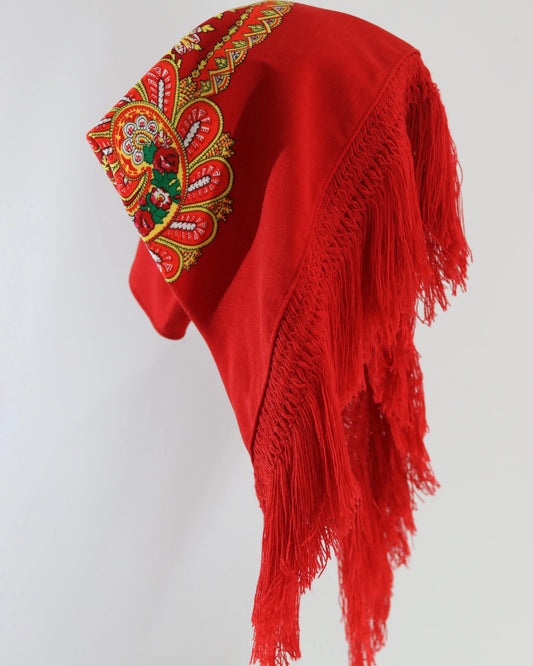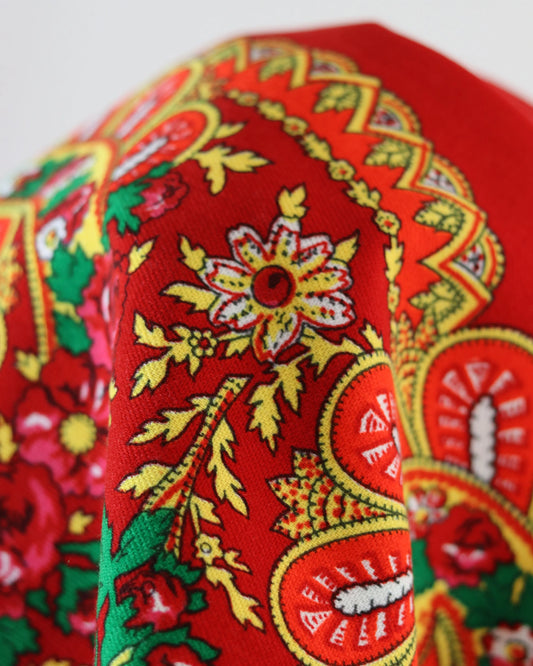The importance of costume in culture
Some clothes are kept in trunks and others that live on the body, but they all carry memories. Every fold, every stitch, every thread is a clue to understanding what a people valued, how they worked, what festivals they celebrated, and what fears they faced. A garment is not just fabric. It is a story, an archive, a manifesto.
The costume as an archive of collective memory
When we look at an old work outfit, we see more than a practical solution to the cold or the sun. We observe the climate of a region, the available materials, the design of tools and routines, and the distances traveled daily. A worn apron near the waist speaks of repeated tasks. A heavy cape indicates nights spent outdoors. A colorful scarf often signals a female voice asserting its presence.
There's also the party outfit, laden with detail and sparkle. Meticulous embroidery, gold threads, full skirts. There, time slows down. The body becomes a showcase of pride, confidence, and belonging. Sparkle isn't free; it's an investment in reputation, in bonds, in the future.
And then there's mourning attire, discreet, almost silent. Restrained colors, austere cuts. Restraint also communicates. A people speaks when they dress, even when they choose silence in their colors.
Materials that speak
The materials tell stories of mountains, sea, and trade. Burel, for example, is made from carded and trodden wool, weather-resistant, perfect for the shepherds of Serra da Estrela. Linen requires water and patience, from cultivation to maceration, so it thrives in valleys where humidity helps. Cotton arrives by sea routes and establishes itself in everyday life with the right lightness for long summers. Silk, rare and desirable, marks distinction, often reserved for occasions and elites.
Dyes travel across worlds. Blue came from the pastels of European dyers and, later, from Asian indigo. Red gained depth from American cochineal and brazilwood, which dyed it a warm red. Yellow came from plants like gauda. The local palette reconnects with pigments from far away, and clothing becomes a map of routes, alliances, and disputes.
When a garment combines burel with silk ribbon, or linen with glass beads, it reveals an economy that combines local production with global exchanges. Nothing is isolated in a garment. There is always a story of encounters.
Colors and patterns: codes at a glance
Colors act as signals. Black, in mourning, reinforces restraint and respect. Red can announce energy, fertility, or celebration. Blue conveys calm and proximity to the sea. Green evokes fields, pilgrimages, and hope. Patterns reinforce the message: stripes mark discipline and repetition; flowers speak of springtime held in the heart; plaid creates order and rhythm.
The message lies in the details. A scarf tied in a certain way indicates marital status. Embroidered birds can suggest a relationship. A vest with metallic appliqués blends aesthetics with symbolic protection. And when a garment is worn by an entire community in a ritual, the meaning multiplies.
Portugal in fabric: regional examples
Portuguese diversity fits into a wardrobe and a photo album. Some pieces have become iconic, while others live almost secretly in family drawers.
| Region/Community | Piece or Outfit | Main materials | Striking details | Usual occasions | What counts |
|---|---|---|---|---|---|
| Minho (Viana, Barcelos) | Farmer and bride outfits | Linen, wool, silk, gold | Live embroidery, valentine's handkerchiefs | Parties, pilgrimages, weddings | Affection, faith, rural work, economic status |
| Nazareth | Seven skirts | Cotton, wool | Layered, scarf, plaid | Daily life, processions | Relationship with the sea, windy weather, protection and modesty |
| Ribatejo | Country costume | Wool, cotton, felt | Green cap, vest, red jacket | Bullfighting festivals, work | Herding, bravery, connection to livestock and the Tagus |
| Serra da Estrela | Burel capes | Trampled wool | Resistance, simple cuts | Grazing, mountain cold | Harsh climate, local textile know-how |
| Trás-os-Montes (Miranda) | Honorary cape, pauliteiros | Wool, velvet, ornaments | Deep black, careful decoration | Ceremonies, dance | Dignity, Mirandese language, community rituals |
| Peniche | Bobbin lace | Linen, cotton | Lace designs, delicacy | Ornaments, accessories | Patience, high-level female technique |
| Azores (Saint Miguel) | Capote and mortarboard | There | Voluminous hood, unique silhouette | Exits, ceremonies | Humid climate, modesty, social distinction |
| Alentejo | Overcoat and samarra | Wool, fur | Warm lining, wide collar | Winter, rural work | Cold plains, country life, sobriety |
| Coimbra | Academic attire | There | Cape and cassock, emblems, classic cuts | Academy, student rituals | Knowledge, belonging, rites of passage |
This table of examples is just a starting point. Each piece has variations, family stories, and old photographs that give it a face.
What can you read on a suit?
To read a costume, it's worth acting like a careful researcher. A quick guide helps:
- Material: where the fiber came from and what it says about the territory
- Cut: freedom or restriction of movement, reinforced areas
- Color: use of local or imported pigments, social conventions
- Pattern: levels of complexity, repetitions, familiar symbols
- Technique: hand sewing, loom, embroidery, lace, appliqués
- Use: localized wear, patches, adaptations
- Context: when the piece appears, who wears it, who makes it
An extra observation: look for the silences. What isn't memorized also speaks.
Technique is culture
The technology of the costume doesn't always use electricity, but it's always technology. Viana embroidery demands coordination, graphic design, and regular stitching. Bobbin lace requires calculation and rhythm, a mathematical process made with wood and thread. Burel is created through an intense mechanical process, with pressing that compresses fibers, creating a barrier against wind and rain.
The hands that master these techniques possess a language all their own. Stitches with names, templates, memories of those who taught. Workshops become intergenerational classrooms. Knowledge can reside in a worn notebook, a repeated gesture, a song that marks the rhythm of the loom.
Each technique carries an ethic of time. There's patience in lace, firmness in burel, meticulousness in embroidery. Unhurried, but with precision.
Identity, power and belonging
Costumes simultaneously standardize and distinguish. When a community wears the same garment at a festival, it strengthens bonds. When a student wears a cape and cassock, he asserts his entry into a body that transcends him. When a countryman wears a green cap and jacket, he presents himself as the guardian of a practice.
There are also layers of power. Access to certain materials was often conditioned by tax, law, or cost. Certain colors were once regulated. The gold jewelry that accompanies Minho costumes speaks both of taste and of economy converted into a visible symbol.
Clothing can still crack like a manifesto. In colonial and postcolonial contexts, textiles such as kente in Ghana, capulana in Mozambique, the sari in India, or the kimono in Japan demonstrate continuity and reinterpretation. The Scottish kilt revived in contexts of national affirmation, the Korean hanbok revisited in ceremonies, the Vietnamese ao dai modernized for the city. The body, when dressed, makes its point.
The world intersects in the fabric
The history of Portuguese costume touches many latitudes. Cotton and indigo traveled on ships that crossed oceans. Calico patterns became popular in the 18th and 19th centuries and entered rural wardrobes with enormous success. On the islands, external influences arrived with sailors and emigrants and intersected with the local climate. The capote from São Miguel embodied protective needs and codes of modesty that spoke to Europe and the Atlantic.
The diaspora brings costumes to other geographies. Holy Spirit festivals in the Azores, also celebrated in California and Canada, maintain crowns and capes that span generations. Those who wear them far from home reaffirm their roots and build bridges. The costume becomes a shared language between grandparents and grandchildren who already speak different languages.
At the same time, a global conversation about respect and sensitivity is growing. Using pieces from other cultures requires care. Authorship must be acknowledged, payment must be made fairly, and meanings must be learned. Exchange is fertile when there is dialogue and responsibility, and when creative communities maintain a voice in what belongs to them.
Museums, archives and technology
The preservation of costumes lives on in vaults, but also in databases, laboratories, and exhibitions. In Portugal, the National Costume Museum in Lisbon houses collections spanning centuries. The Costume Museum in Viana do Castelo gives context and life to regional pieces. The Hat Museum in São João da Madeira reveals the world of hats from raw materials to finishing. Municipal and ethnographic archives, ranches, and associations maintain living collections, many with photographic, audio, and video recordings.
Technology expands this mission. High-resolution scanning, photogrammetry for 3D modeling, augmented reality to observe the inside of pieces without touching them. Rich metadata on provenance, techniques, and dating. All of this facilitates investigation and sharing, reduces wear and tear, and creates new access routes for schools and the general public.
Documentation doesn't replace the touch, but it protects the original and gives stories longevity. When a costume is strictly cataloged, it takes on a new life.
Contemporary fashion: meaningful reinterpretations
Thoughtful designers look to the archive and see possibilities. Some work with burel in the mountains and bring it to the runways with contemporary cuts, maintaining its robustness and grain. The Burel Factory in Manteigas is an example of industrial renewal with respect for the material. Minho embroidery inspires graphic applications on urban coats. Gondomar filigree is used in accessories that blend traditional techniques with new languages.
In Portugal, designers like Alexandra Moura, Nuno Gama, Luís Buchinho, Katty Xiomara, and Marques'Almeida have, at different times, attempted dialogues between tradition and present. Sometimes in a palette that evokes processions and pilgrimages, sometimes in a silhouette reminiscent of academic capes, sometimes in textures with a textile memory. It's not about copying, but about listening. The past becomes a repertoire, not a cage.
This movement connects with international markets, cultural tourism, and new forms of local pride. When fashion gives a platform to artisans and producers, clothing gains a second life, impacting the economy and self-esteem of communities.
Sustainability and future
Traditional garments suggest paths to a fairer future in clothing. Natural fibers, local production, durability, and repair. A well-made coat passes from generation to generation. Embroidery can be mended and adapted to another body. The much-talked-about circular economy has always existed in homes where nothing goes to waste.
There's room for responsible innovation: botanical dyeing with a lower impact, certification of origin to protect specific techniques, and cooperative networks that guarantee a decent income for producers. Fashion, design, and anthropology schools and universities can work side by side with artisans, documenting and promoting value. Digital platforms help connect creators with conscious buyers.
When a young person decides to learn bobbin lace or weaving, time becomes an ally. The future doesn't erase the past; it adds new tools to it.
How to dress with respect and curiosity
Interacting with costumes from other regions or cultures requires attention. Some practical ideas:
- Ask before wearing, especially ceremonial pieces
- Pay what is fair to those who do it, even when the sharing is informal
- Avoid combinations that distort sacred symbols
- Learn about meanings and contexts, not everything is fantasy
- Credit techniques and communities when sharing on social media
- Choose to buy from local cooperatives and workshops, not from industrial replicas with no clear origin.
Dressing up can be a gesture of cultural friendship. An embrace, not an appropriation.
Small hand-sewn stories
A valentine's handkerchief, with intentional typos, preserves the voice of someone who learned to write late and marries affection with spelling. It's embroidered poetry, without academic pretensions, which often served as a proposal, a "yes" in fabric.
The seven skirts of Nazaré protect from the wind and allow for adaptation to the heat, but they have also become a symbol of identity. Some say they represent days of the week, ocean waves, and layers of life. Legend and function intersect. That's the power of a good costume.
The Mirandese cloak of honors adorns the solemnity of a community that preserves its own language and dances with sticks to a rhythm that comes from afar. Each movement emanates from wool and pride.
The São Miguel cape, with its wide hood, creates almost architectural silhouettes against the green landscape. Modestness, there, is aesthetic. And very photogenic.
In Ribatejo, the campino guides bulls and horses, steady in his step, wearing garments designed for work and celebration. Bright colors, upright posture. The clothing conveys the message to the audience at the starts and pilgrimages.
In the mountains, burel keeps the cold out and lets life go on. Woven resistance. A coat like this lasts for decades, inherited and mended, with no need for replacement.
Education of the gaze
Filtering images and recognizing quality is part of the visual literacy of those who appreciate costumes. Old photographs show workstations, markets, processions. In them, what is worn helps to date, locate, and understand social relationships. Learning to look at hems, bibs, inserts, and buttons. Knowing that a well-done buttonhole stitch can indicate experienced hands. Recognizing when a costume is staged for a tourist photo and when it is lived in.
- Visit museums, craft fairs and workshops
- Talk to those who make it and those who use it
- Read catalogs, monographs, ethnographic studies
- Watch square dance parades with active listening and respect
The more trained the eye, the clearer the story.
Attire as a continuous conversation
What we wear today will be memories tomorrow. A T-shirt from an important concert, a sweater knitted by a grandmother, a wedding dress. All of this, stored away, becomes an emotional and social archive. Traditional clothing taught us to see fabric as language. Contemporary fashion invites us to write new sentences with old vocabulary.
The right clothing, at the right time, brings people together. It promotes care for what is common. And, when created by hands that know the land and the time, it dresses the body and also the dignity.
In the end, each people leaves their voice in the fabric. And the beauty lies in continuing to hear it, thread by thread.

